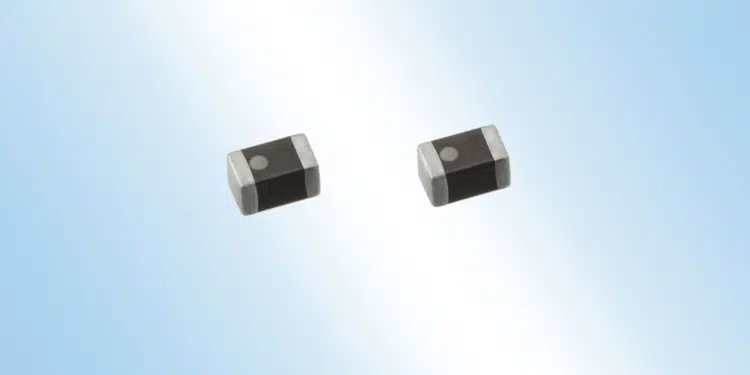TDK Corporation has developed the new MLJ-H1005 inductors for use in NFC* (near field communication). Mass production will begin in February 2021.
The inductors’ intended use is for the LC filters of NFC circuits. It is necessary for inductors to have narrow tolerances to minimize the loss caused by mismatched impedance with the antenna. TDK offers this line of inductors featuring a tolerance of ±5% to meet this need. In addition, it is important to control inductor loss at the 13.56 MHz communication frequency to prevent the reduction of antenna output power. The AC resistance (Rac) must be kept low and maintained even as current is applied. By super low loss material development, the new MLJ-H series achieves lower Rac during high-current applications than the existing MLJ-W series.
The use of NFC circuits is rapidly increasing in smartphones, smartwatches, wearables, and other peripheral devices. They are projected to be used in diverse ways in the realization of a completely touchless society, including in cashless payments. TDK will expand its line of MLJ series inductors to cater to these needs and meet the needs of customers.
Glossary
- NFC: Near Field Communication. NFC is short-range wireless connectivity technology that enables two NFC-compatible devices to communicate with each other to transfer data or for authentication when placed close to each other.
Main applications
- NFC circuits
Main features and benefits
- Low AC resistance is achieved in high-current applications, suppressing loss
- Narrow inductance tolerance of ±5%, which suppresses loss caused by mismatched impedance with the antenna
- Compact, low-profile dimensions that save space, high density mounting is possible by low magnetic leakage structure
Key data
| Type | Inductance (nH) @13.56MHz | Q typ. @13.56MHz | AC resistance [Ω] typ. @13.56MHz | DC resistance (Ω) max. | Rated current (mA) max. |
|---|---|---|---|---|---|
| MLJ1005HXG82NJ | 82 ± 5% | 14 | 0.51 | 0.390 | 850 |
| MLJ1005HXG91NJ | 91 ± 5% | 14 | 0.59 | 0.351 | 900 |
| MLJ1005HXGR16J | 160 ± 5% | 14 | 0.88 | 0.754 | 600 |
| MLJ1005HXGR18J | 180 ± 5% | 14 | 1.08 | 0.780 | 500 |
| MLJ1005HXGR20J | 200 ± 5% | 14 | 1.13 | 0.845 | 480 |































